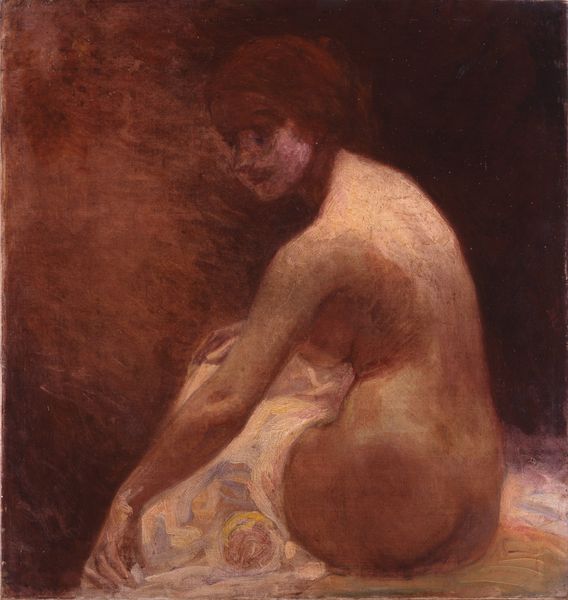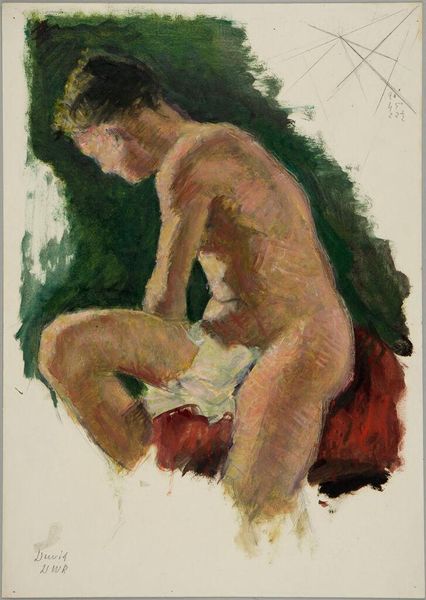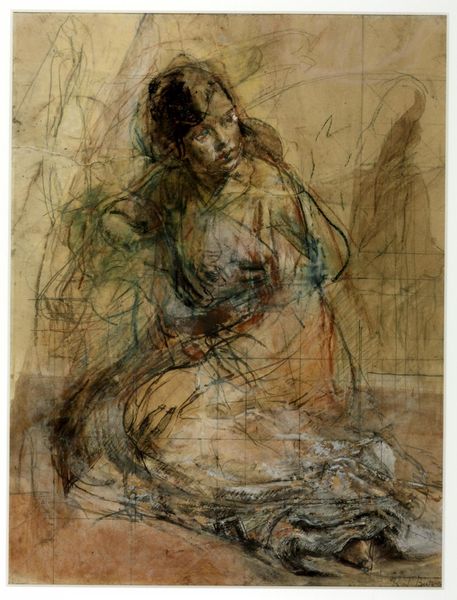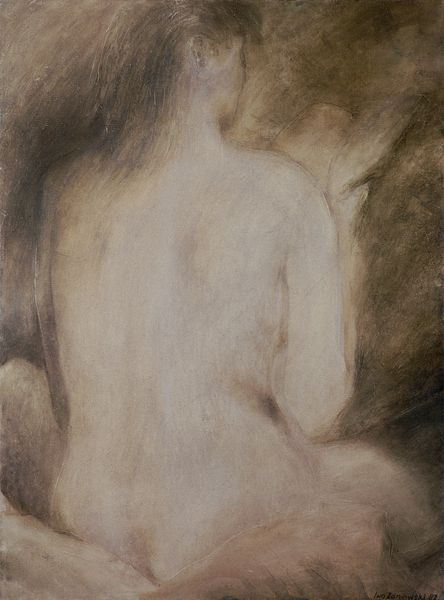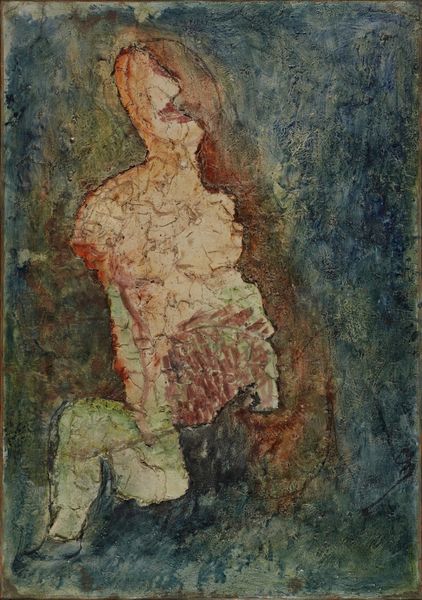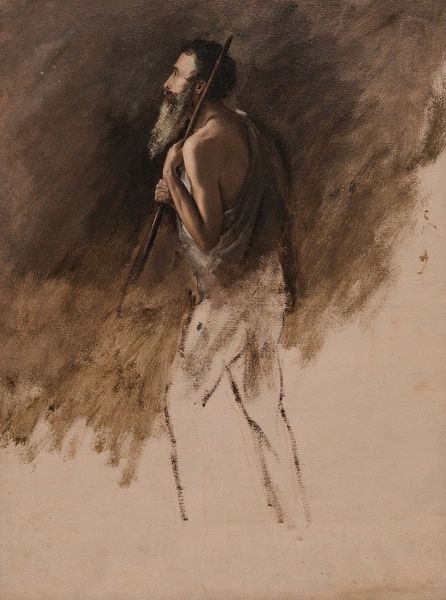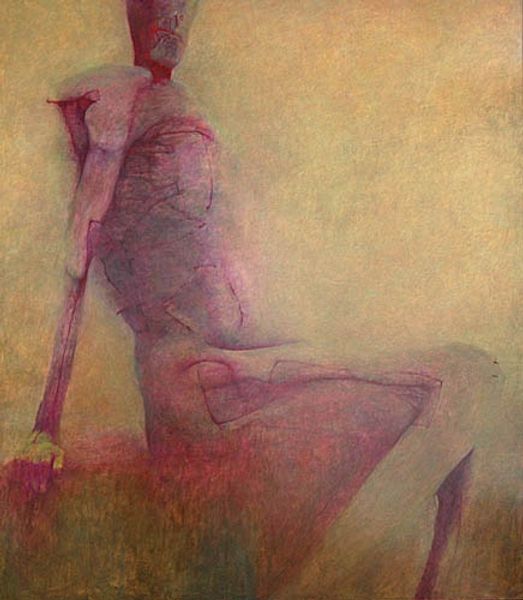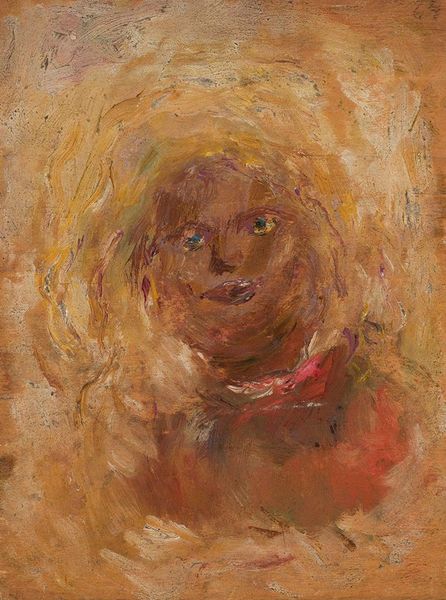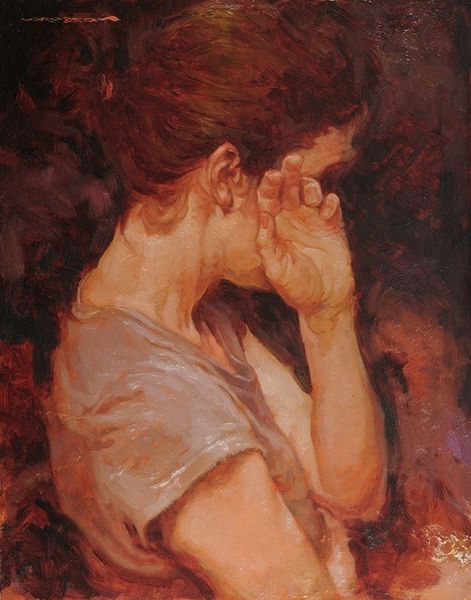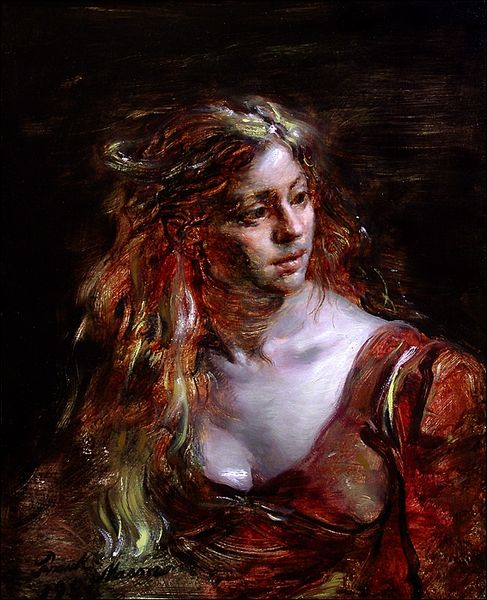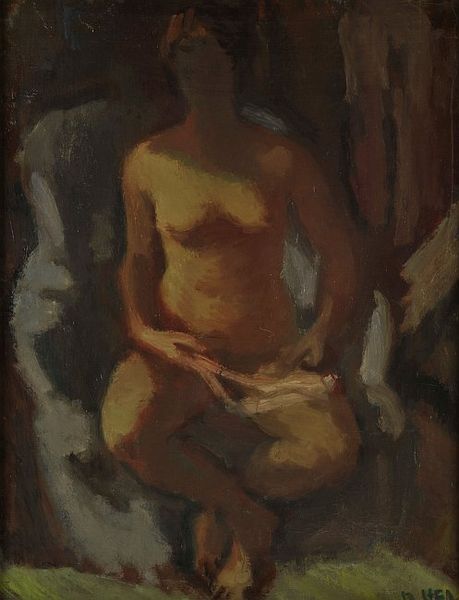
painting, oil-paint
#
portrait
#
painting
#
oil-paint
#
figuration
#
oil painting
#
academic-art
#
nude
#
realism
Copyright: Frank Mason,Fair Use
Curator: I’m struck by the contemplative stillness of Frank Mason's “Primavera” from 1964. It seems dipped in twilight, almost like an echo from another time. Editor: The handling of oil paint is very straightforward. There is minimal build up; the weave of the canvas remains clearly visible. It's quite a raw study of form and light. Curator: I agree. The figure, presented in a classical pose, becomes a vessel for something more. The title “Primavera,” or springtime, conjures Botticelli. But it’s as if we’re looking at a memory of a Renaissance ideal, filtered through the lens of the mid-20th century. Editor: You can really see Mason working from direct observation. Notice the way he renders the fall of light across the planes of her body. The emphasis on line, form, and anatomy definitely align the painting with its Academic Art roots, while its creation relies heavily on visual data. Curator: Absolutely, it recalls the academic tradition, and its associated symbol systems, where the female nude became an allegory of virtue, beauty, and, yes, springtime renewal. But in this version, there's a modern ambivalence. Her gaze isn’t inviting; it's almost melancholic. The pose isn't graceful, exactly; more…studied. The classical theme gains tension. Editor: There's a certain austerity in the materials, which enhances the painting's immediacy. There are not grand or polished surfaces on display, allowing us access to the pure act of painting. Curator: Indeed, by referencing the classical nude within this relatively austere context, Mason taps into our collective memory, reminding us of art history’s persistent themes of mortality, desire, and idealized forms, rendered raw. It is this dichotomy that draws us into the artwork's enigmatic beauty. Editor: Agreed. I leave feeling a new respect for his artistic technique, and also that I’m leaving with far more questions about painting and what to expect when producing it.
Comments
No comments
Be the first to comment and join the conversation on the ultimate creative platform.
